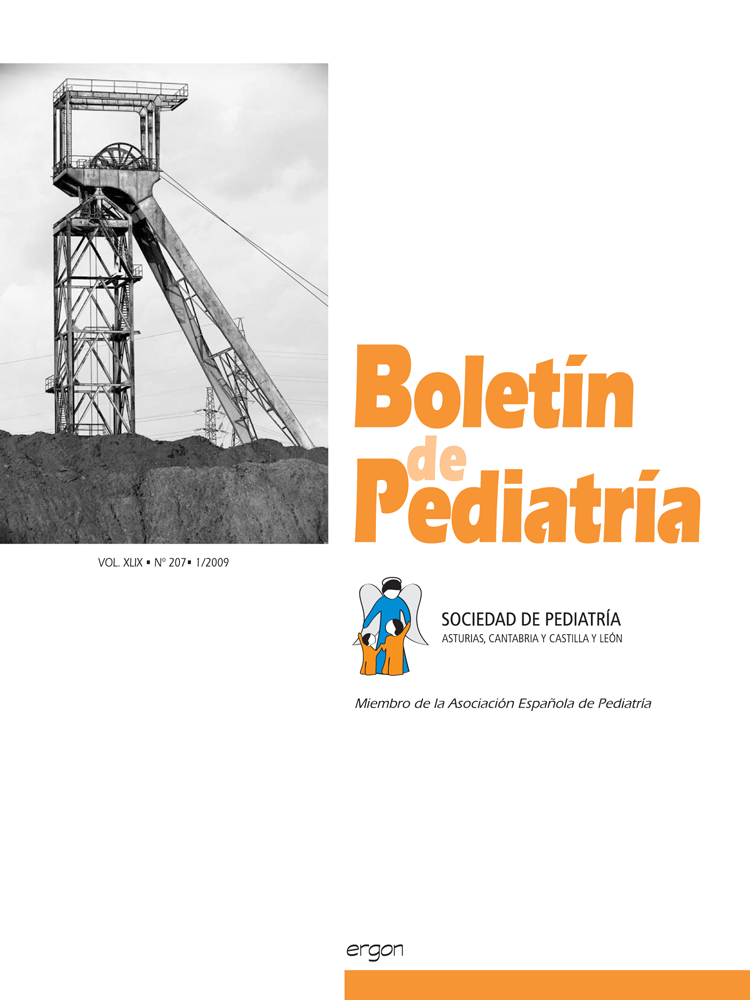Abstract
Aim: The patients with bronchiolitis have a high risk of development of asthma in the infancy. We present the preliminary information of a study of the first episode of sibilants of the infants.
Methods: Cross-sectional study. Infants with the first episode of wheezing hospitalized from January 2000 to December, 2007. Theirs antecedents, symptoms, severity, treatment and evolution are described.
Results: We have reviewed 271 infants with a first episode of wheezing, the 3.5% of the total hospitalizations (7,679 cases). Of them 60% were males and 93% younger than 12 months. The average length of stay was 4 days. The most frequent symptoms were night cough, rhinitis and rejection of the feeding (96.6%, 95.9% and 61% respectively). In the pulmonary auscultation, 69% showed good ventilation and 64.8% slight expiratory sibilants. Slight intercostal muscle use was observed in 62.9% of the infants. The average pulmonary score at diagnosis was 1.89 points. The detection of the respiratory syncitial virus (RSV) was realized in 92% of the cases and was positive in the 68%. Chest radiograph was performed in 76% of the cases, showing hyperinsuflation in the 14%. In the acute phase the 61.6% were treated with adrenaline, the 51.3% with inhaled beta2 adrenergic. The utilization of the corticoids was minor (oral
7.7%, inhaled 5.2% and parenteral 5.5%). As maintenance, the most used treatments were inhaled beta2 agonist (20% of the cases).
Conclusion: The first episode of wheezing that needs hospitalization is a male younger than 12 months with a detection of the respiratory syncitial virus (RSV) positive, chest radiograph with hyperinsuflation and an average pulmonary score at diagnosis with 1.89 points. The acute phase was treated with adrenaline and/or inhaled beta2 adrenergic. The utilization of the corticoids at the first episode of wheezing it does not usually occur.

This work is licensed under a Creative Commons Attribution-NonCommercial 4.0 International License.
Copyright (c) 2009 Boletín de Pediatría
